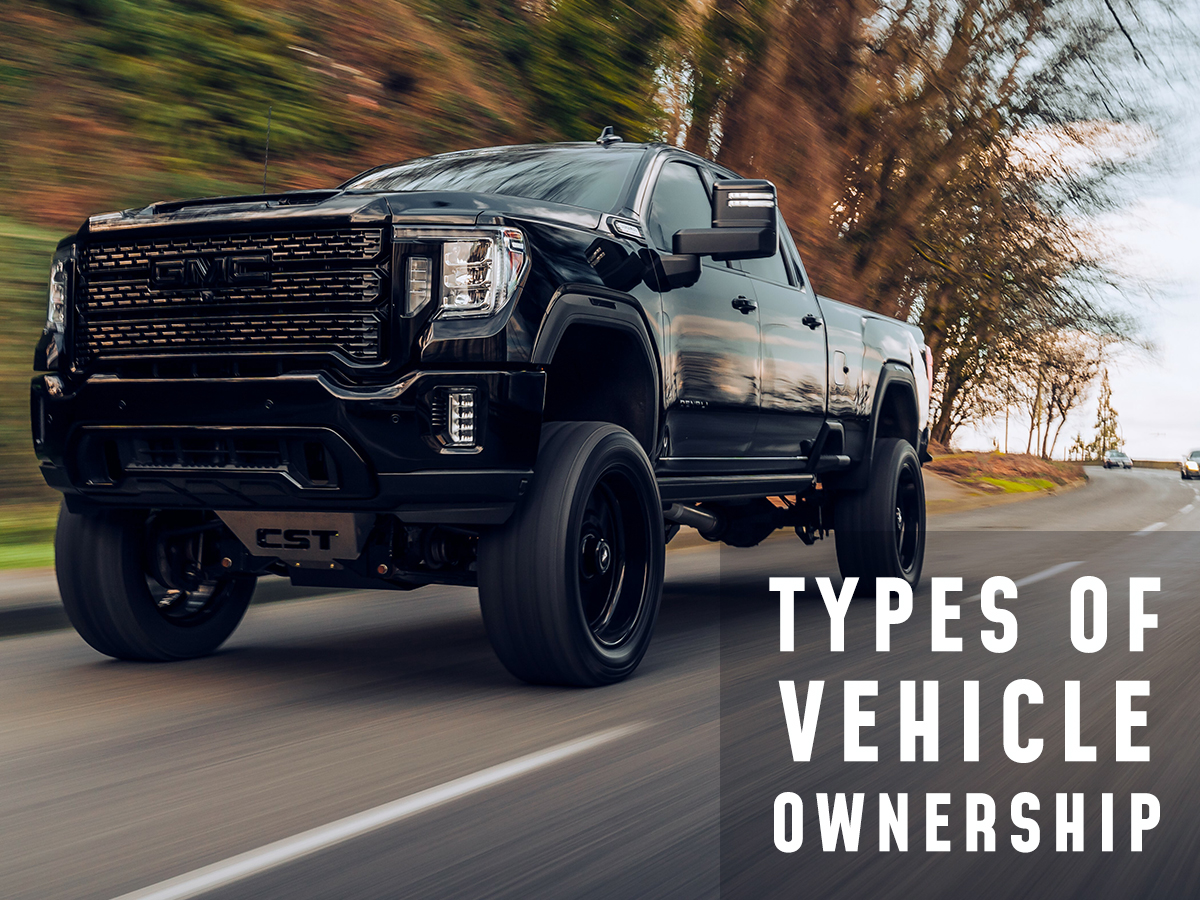Motor vehicles are an essential part of our daily lives as they enable us to commute, transport goods, and embark on exciting adventures. Furthermore, understanding the different types of motor vehicles can help us appreciate their diversity and functionality.
So, in this article, we will delve into the types of motor vehicles, look into how they are categorized, explore their technological advancements, examine their safety measures, and assess their environmental impact. But before delving into the details, let’s look at what is considered a motor vehicle.
What are Motor Vehicles?
Motor vehicles are self-propelled machines designed for transportation that are equipped with engines that convert fuel into mechanical power, enabling them to move forward. From cars to buses, these vehicles have greatly impacted our daily lives, so let's take a look at the main types of motor vehicles.
The 6 Types of Motor Vehicles
Motor vehicles have provided us with the freedom to travel for decades. Given that they come in various shapes, sizes, and designs, let's take a closer look at the main types of motor vehicles to see which one best suits your needs:
| Motor Vehicle | Characteristics |
| Cars | They are designed for personal transportation and offer a wide range of options to suit every individual's requirements, given that some prioritize fuel efficiency, others focus on safety, and some emphasize luxury, with plush interiors, cutting-edge entertainment systems, and state-of-the-art amenities. |
| Trucks | They are the backbone of the logistics industry given that their robust engines and spacious cargo areas allow truck drivers to travel long distances when delivering goods while ensuring the smooth functioning of supply chains. |
| Buses | They are designed with comfort and efficiency in mind, featuring comfortable seating, air conditioning, and accessibility features for individuals with disabilities given that they are mainly used for public transit, school transportation, and long-distance travel, playing a role in the reduction of traffic congestion. |
| Motorcycles | These two-wheeled vehicles, which include cruisers, sport bikes, and off-road bikes, allow riders to zip through traffic and explore the open road, providing a unique sense of adventure. |
| Scooters | They offer a more practical and fuel-efficient option for urban commuting, given they are very compact in size, allowing for effortless navigation through congested streets. |
| Special Vehicles | They are composed of construction vehicles, such as excavators and bulldozers; fire trucks, which are equipped with powerful water cannons and specialized equipment; and military vehicles, which are designed for defense and tactical purposes and are equipped with advanced weaponry, armor, and special communication systems. |
Whether it's the thrill of a sports car, the practicality of a scooter, or the functionality of a construction vehicle, motor vehicles have become an integral part of our lives, propelling us forward and connecting us in ways that are unimaginable.
But now that we have understood what motor vehicles are and the types available on the market, let’s take a closer look at how these motor vehicles are classified to further understand which type may suit your needs best.
The Different Classifications of Motor Vehicles
Motor vehicles can be classified in several ways based on various factors. So let's explore these classifications to further understand which type of motor vehicle is best suited for you:
| Classification | Categories |
| Based on Fuel Type |
-Gasoline-powered, which are fueled by gasoline that powers an internal combustion engine, making them suitable for heavy-duty applications. -Diesel-powered, which utilize diesel fuel in their internal combustion engines and are known for their fuel efficiency and torque. -Electric, which are powered by electricity stored in rechargeable batteries, making them environmentally friendly. -Hybrid, which combine traditional fuel and rechargeable batteries to power the engine, reducing the emissions of the vehicle. |
| Based on Size and Capacity |
-Compact cars, which are primarily designed for urban use and can accommodate four to five passengers while maintaining fuel efficiency. -Sedans, which are mid-sized vehicles that offer more space for passengers and usually have a separate trunk for storage. -SUVs or, Sport Utility Vehicles, which provide more space for passengers, while being able to handle various terrains. -Vans which are designed for transporting larger groups of people or goods and are commonly used for family transportation or commercial purposes. |
| Based on Purpose or Usage |
-Cars, which are the go-to choice for daily commutes and personal transportation needs. -Commercial, which include trucks and buses that facilitate the movement of goods and people across long distances. -Two-wheelers, which offer an economical and efficient mode of transportation and include motorcycles and scooters. -Special purpose, which are designed to meet specific requirements, such as off-road capabilities for construction sites, firefighting equipment for emergency situations, and armory for military tactics. |
As you can see, there are quite a few factors that you need to keep in mind when making your decision on which motor vehicle to acquire, like fuel efficiency, size, capacity, and usage. However, there is another element that you may want to consider: the safety features.
The Safety Features of Motor Vehicles
One extremely important aspect to consider when purchasing a motor vehicle is the safety features that it offers. So let’s take a closer look at what each type of vehicle provides in regards to safety.
Safety Features in Cars
Cars today come equipped with various safety features to protect passengers, which include seat belts, airbags, anti-lock braking systems, electronic stability control, and advanced driver assistance systems. Modern cars have also incorporated advanced technologies, which include:
- Lane departure warning systems alert the driver if they unintentionally drift out of their lane, helping prevent accidents caused by driver distraction or drowsiness.
- Adaptive cruise control, which automatically adjusts the speed of the vehicle to maintain a safe distance from the car ahead, reduces the risk of rear-end collisions.
- Automatic emergency braking, which can detect potential collisions and apply the brakes if the driver fails to react in time.
- And blind-spot monitoring systems, which use sensors to detect vehicles in the driver's blind spots, provide visual or auditory alerts to prevent dangerous lane changes.
As technology continues to evolve and manufacturers innovate further, there is no telling what the future could hold in regards to car safety. Make sure that your car has optimum safety features to ensure your and your loved ones' well-being.
Safety Features in Commercial Vehicles
Commercial vehicles, like trucks or buses, are equipped with safety features such as advanced braking systems, stability control, and driver monitoring systems, which use cameras and sensors to monitor the driver's behavior, detecting signs of fatigue or distraction to prevent collisions.
To further enhance their safety, these vehicles include electronic stability control, which helps prevent rollovers and skidding by automatically applying the brakes and adjusting engine power to maintain vehicle stability during sudden maneuvers or slippery road conditions.
Safety Features in Two-Wheelers
Riders of motorcycles and scooters need to be aware of safety measures to protect themselves on the road. These include taking precautions such as:
- Wearing a high-quality helmet that fits properly and meets safety standards, providing protection to the head in the event of a crash.
- Using appropriate protective gear, including jackets, pants, gloves, and boots, to minimize the risk of abrasions and fractures in case of an accident.
- Following traffic rules, which include maintaining a safe distance from other vehicles, using turn signals, and obeying speed limits.
- Undergoing proper training to obtain a valid license before riding on public roads.And regularly maintaining the two-wheeler, which includes checking the tire pressure, brakes, and lights to ensure that the vehicle is in optimal condition for driving.
By following safety measures and looking for motor vehicles with enhanced safety features, you can ensure the well-being of all road users. Now, before making any decisions, let’s take a look at the environmental impact of motor vehicles.
The Environmental Impact of Motor Vehicles
As the number of motor vehicles on the road continues to increase, so does air pollution and the greenhouse effect. So to further understand their environmental impact, let’s take a look at the different emission levels that come with each type of vehicle.
| Motor Vehicle | Emission Level |
| Gasoline-powered vehicles | They release carbon dioxide, nitrogen oxides, and particulate matter, which pose a risk to human health and the environment, giving them significantly high levels of emissions that have been linked to respiratory problems, cardiovascular diseases, and climate change. |
| Diesel-powered vehicles | They emit higher levels of nitrogen oxides and particulate matter compared to gasoline-powered vehicles, proving a higher emission level that has even been linked to carcinogenic compounds. |
| Electric vehicles | They offer a cleaner alternative and emit zero tailpipe emissions, meaning they do not release any pollutants directly into the air, reducing the amount of CO2 and other harmful pollutants released into the atmosphere. |
| Hydrogen Fuel Cell Vehicles | They use hydrogen gas to generate electricity, producing only water vapor as a byproduct, reducing our dependence on fossil fuels. |
Gasoline and diesel-powered vehicles emit harmful pollutants that contribute to air pollution and climate change. However, the development of eco-friendly motor vehicles, such as electric and hydrogen fuel cell vehicles, offers a cleaner and more sustainable alternative.
By transitioning to these vehicles, we can reduce greenhouse gas emissions, improve air quality, and decrease our dependence on fossil fuels. And the technological advancements that are in the near future will be sure to provide an even greener future.
The Technological Advancements in Motor Vehicles
From traditional combustion engines to electric systems, there is a constant drive to make vehicles more efficient, safer, and environmentally friendly. Over the years, the automotive industry has witnessed remarkable advancements in technology, particularly in the realm of motor vehicles.
These advancements have not only revolutionized the way we commute but also contributed to addressing climate change and depleting natural resources. So let’s take a look at a few of these advancements to further understand how technology impacts the automobile industry.
- Electric and hybrid vehicles have gained significant traction in recent times as a sustainable alternative to traditional gasoline-powered cars, reducing the dependency on fossil fuels.
- As we look into the future, we will be seeing more autonomous vehicles, which are equipped with sensors, cameras, and artificial intelligence, enabling them to navigate and operate without human intervention, which enhances safety and traffic flow.
- With their ability to optimize routes, self-driving cars can also alleviate traffic congestion, leading to smoother and more efficient traffic flow, which saves time and reduces fuel consumption and emissions.
As you can see, the future of the motor vehicle industry is only looking towards a safer and greener future. So when looking for a vehicle of your own, consider these advancements that have already made it to the market.
Choosing the Right Motor Vehicle for You
Understanding the different types of motor vehicles is crucial to comprehending their functionalities, safety aspects, and environmental impact. As technology continues to evolve, motor vehicles are becoming more sustainable, efficient, and safe.
From cars to commercial vehicles and two-wheelers, each type serves a unique purpose in our modern transportation landscape. Whichever type of motor vehicle you choose, remember to be safe and take into consideration the technological advancements we went through to go that extra mile!








